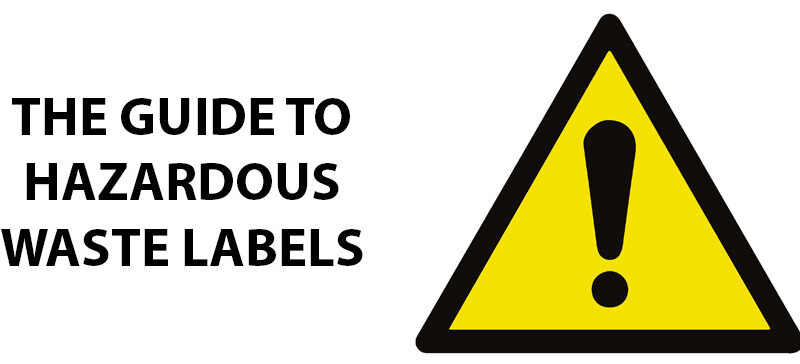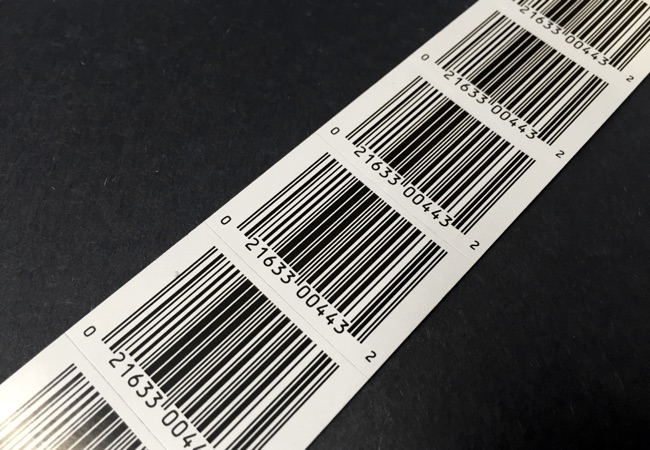If you generate any kind of hazardous waste, you need to follow regulations set by both the Environmental Protection Agency (EPA) and the Department of Transportation (DOT). Additionally, OSHA stipulates that you use hazard communications on labels when employees will be handling hazardous waste and dangerous goods.
Hazardous waste labels identify containers filled with hazardous waste and help you comply with regulations. From the moment a container holds any amount of hazardous waste, it needs to be labeled accordingly.
Properly labeling and transporting hazardous waste is essential to protect both your employees and the public. That’s why we’ve put together this essential guide to hazardous waste labels. Read on to learn everything you need to know to stay compliant and keep your employees safe.
Why Are Hazard Labels Important?
Hazardous waste is harmful to humans, animals, and the environment. Keeping these dangerous substances from contaminating food and water sources is of the utmost importance. Hazardous waste labels play an important role in preventing improper disposal that would put people’s health at risk. Hazardous waste labels include specific information about the kind of hazard inside, handling instructions, and who to contact in case of a spill.
Some of the important functions of hazard labels include:
- Universal communication: No matter what language is spoken, hazardous waste labels effectively communicate the nature of the hazard inside.
- Handling instructions for safety: Because different hazards have different properties, each class must be handled appropriately for safety.
- Communicate hazards to employees: Employers are responsible for ensuring the safety of their employees by communicating the hazards of the materials they are working with.
- Placement during shipping and stowage: Hazard labels allow carriers to make appropriate decisions about where to stow hazardous waste during transport.
- Inform emergency responders: In case of an accident, emergency responders need to know what has been spilled in order to properly clean up. Emergency responders may also have to evacuate an area depending on the class of hazardous waste.
- Remain compliant: The DOT, EPA, and OSHA all have regulations regarding hazardous waste labeling and hazard communication. Hazard labels help you remain compliant to avoid fines or even jail time, and stay on time with your shipments.
Hazard Classes
Regulations from the DOT specify how hazardous waste should be labeled during transportation. The DOT has identified nine classes of hazards. Each class must be labeled and shipped in a specific way.
- Hazard Class 1–Explosives
- Hazard Class 2–Gasses
- Hazard Class 3–Flammable and combustible liquids
- Hazard Class 4–Flammable solids
- Hazard Class 5–Oxidizing substances, organic peroxide
- Hazard Class 6–Toxic substances and infectious substances
- Hazard Class 7–Radioactive material
- Hazard Class 8–Corrosives (liquids and solids)
- Hazard Class 9–Miscellaneous hazardous materials, such as lithium batteries
In addition to the nine classes, many of the classes also have divisions. For example, Class 1–Explosives has six divisions, such as 1.1 Explosives (with a mass explosion hazard). More information about the classes and divisions can be found here.
Medical Device Labeling: What You Need to Know
What Do They Look Like?
Each of the hazard classes has unique properties that affect how it should be stored and transported. To make class recognition instantaneous, hazardous waste labels use different colors and markings for each particular class and division. The DOT requirements, which are very specific, can be viewed here. These specifications must be followed to remain compliant. As the shipper, it is your responsibility to choose the appropriate hazardous waste label design.
Although the color and markings used vary, all hazardous waste labels used for transport are the same shape: a square-on-point/diamond. Additionally, the labels must be 4” x 4”. Hazard labels are clear to read and use contrasting colors to stand out. The text and symbols must be either black or white, and if the label is the same color as the background, it must have a contrasting border around it.
Where Are Hazardous Waste Labels Placed?
Placing hazardous waste labels in the right place is essential for safety and compliance with DOT regulations. Labels must be placed:
- On the packaging
- On the overpack
- As close to the UN number/proper shipping name as possible
Hazard Communication on Labels
Hazard communication on labels is an essential part of keeping employees safe. Hazard communications include both procedures and processes that must be undertaken when handling chemicals and hazardous waste. Per OSHA, employers must properly label hazardous waste, along with providing training and safety data sheets so that employees fully understand the hazards they are working with. OSHA’s latest hazard communication regulations can be found here.
According to OSHA, manufacturers and imports of chemicals and hazardous waste and materials must use hazard communication on labels. These labels include a signal word, pictogram, hazard statement for each hazard class and division, product identifier, and supplier information. The label also needs to include precautionary statements, such as “Do not eat or drink while handling this product.”
Hazard communication labels must be displayed prominently so that they are easy to see. Additionally, they must be legible and in English. Other languages may be used on the labels in addition to English.
Custom Hazardous Waste Labels
Although the DOT, EPA, and OSHA all have specific regulations for labeling hazardous waste and dangerous goods, they don’t provide standardized labels. Instead, it’s your responsibility as the manufacturer or transporter to properly label your hazardous waste. At Coast Label, we can help you design custom hazardous waste labels and custom dangerous goods labels that will help you remain compliant.
In addition to helping you uphold government regulations in your label design, we can help you engineer labels that will withstand the rigorous environments of industry. From heat-tolerant labels to weatherproof labels, we’ll work with you one-on-one to choose the right combination of adhesives and materials so that your labels will stay put and remain legible.
Custom Hazard Label Uses
Custom hazard labels are used in a huge variety of industries. From manufacturing to healthcare, any company that generates hazardous waste must use the appropriate hazardous waste labels. Here are some of the uses of custom hazardous labels:
- Spent solvent waste
- Electroplating and metal finishing waste
- Dioxin-bearing waste
- Wood preserving waste
- Healthcare waste, such as spent needles, unused prescription drugs, radioactive materials used for the diagnosis and treatment of patients, and cleaning chemicals
- Old batteries
- Discarded cleaning chemicals
Custom Dangerous Goods Labels
Dangerous Goods, like hazardous waste, pose a risk to people, animals, and/or the environment. Examples include things like paint, explosives, magnets, lithium batteries, and corrosive substances like bleach. Hazardous waste is considered a dangerous good. During shipping, Dangerous Goods need to be appropriately labeled.
At Coast Label, we can help you design custom dangerous goods labels that will suit your shipping needs. As a premier label manufacturer, we use only the best materials and adhesives to manufacture your labels. Our application specialists will work with you one-on-one to make sure your labels will weather the rigors of shipping and handling. Contact Coast Label today to discover the Coast difference!



